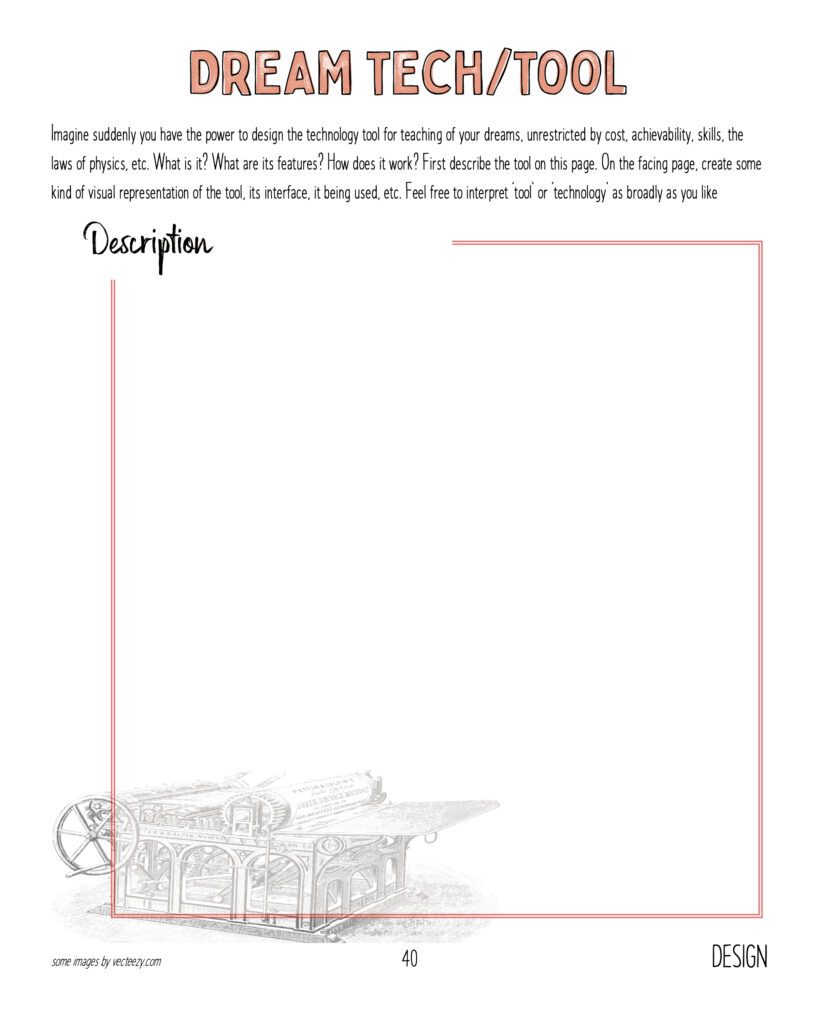

Design Forward
An emergent exploration of critical instructional design.
Design Forward
Portfolio Part: Dream Technology for Nursing Education
DREAM TECH TOOL
Dream Technology for Nursing Education
Step One
Imagine suddenly you have the power to design the technology tool for teaching of your dreams, unrestricted by cost, achievability, skills, the laws of physics, etc. What is it? What are its features? How does it work? Describe your technology tool in as much detail as possible.
This activity feels really difficult because I want a fantasy tool that can be so many things at once!
I want students to be able to log into a system that has a virtual exploration of human anatomy and physiology, both of which can change according to any disease or disorder that the student (or faculty) assigns to it. I want this same tool to create an electronic health record for the ‘patient’ that students use as they provide virtual care to the ‘patient:’ medications, nursing interventions, patient education, etc. The tool would give feedback to the students based on the care they provide, and they would have the chance to re-do any part of it that they wanted. I want the tool to have a Reflect and Share section that would be visible to the students’ peers so they can benefit from each other’s learning. Students’ experiences with the scenarios could be saved for future review.
Parts of this dream tool exist in the form of virtual unfolding patient scenarios, and we have access to them via ATI. However, they are not super life-like. I want my dream tool to be like a role-playing game where the student feels like they are IN the room with a REAL person talking to them, or they are looking at a real human body and seeing its actual pathology.
I think the peer sharing part of this dream tool is especially important to me. Nursing students experience a high degree of stress and therefore get hyper-focused on their individual actions and learning, on doing everything right. I think their stress might decrease if they know their actions could become a shared experience, something to learn from rather them demonstrate as an example of perfection. Ideally, this tool would also have a section in which students could create a scenario for themselves and others to use.
This tool would be a computer program with a virtual reality headset. Students would log in and be in their virtual patient care world. They could use voice commands to document their actions, as if they were talking to an actual patient. I really don’t have any experience using this kind of technology, so the link to images shows generic products. However, I think it IS possible to create such a tool, although it would be very expensive. Link:
https://www.google.com/search?sca_esv=b9615c6636962dbd&rlz=1C1GCEA_enUS962US962&q=google+image+virtual+reality+headset&tbm=isch&source=lnms&prmd=ivsnhmbtz&sa=X&ved=2ahUKEwjIpPD-5LqEAxWjjYkEHRoGCWMQ0pQJegQIEBAB&biw=1280&bih=559&dpr=1.5
Step Two
Next, create some kind of visual representation of the tool, its interface, it being used, etc. Upload your image below.

Step Three
Now, based on the tool that you designed, consider: What instructional problem does it solve? What NEW problems might it present? Who does it include and who does it leave out? What does this tool tell us about you and your values? Consider these questions from the student perspective. What might their response to your dream tool be?
